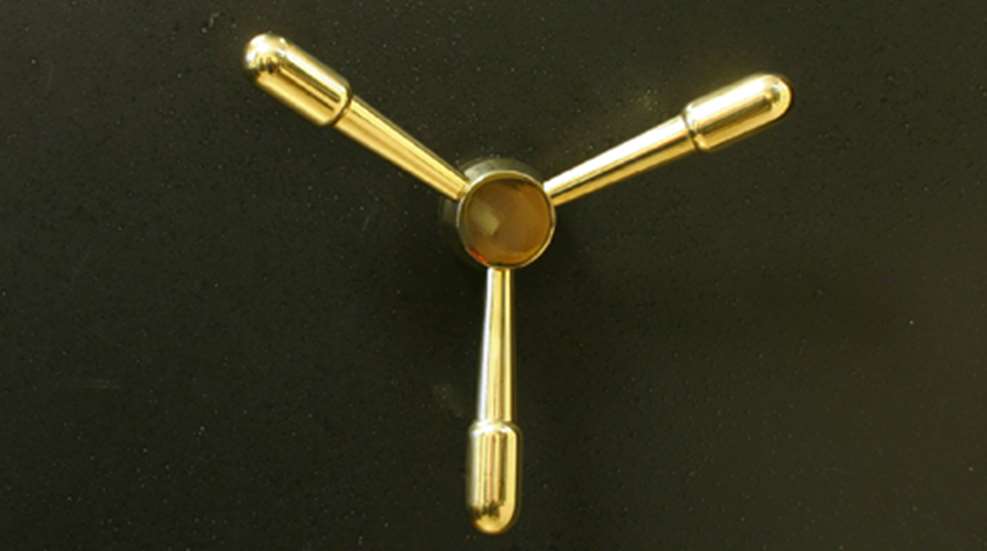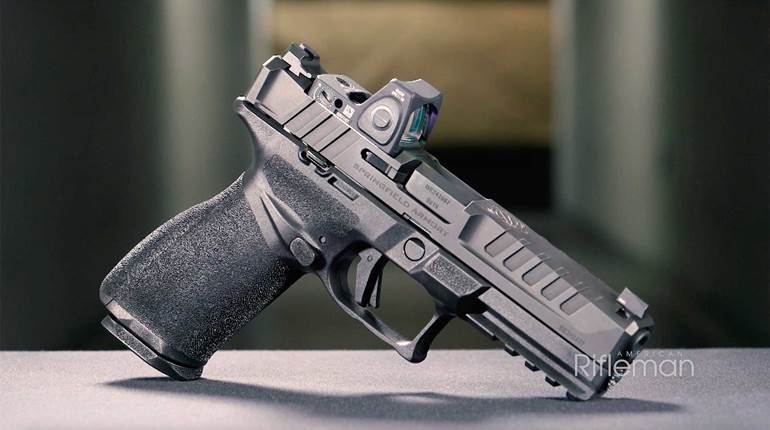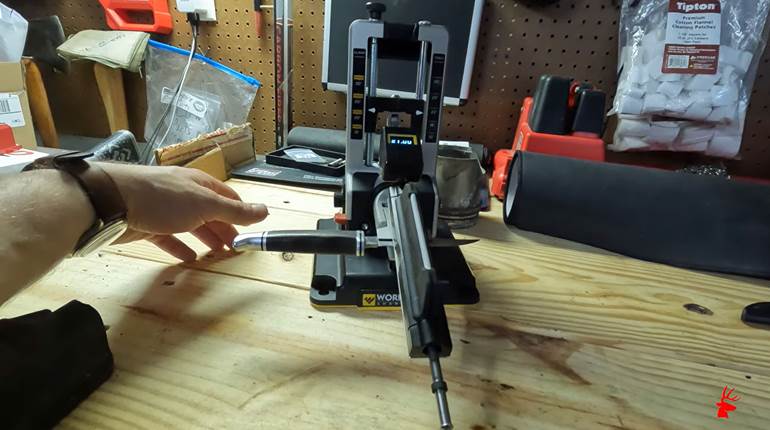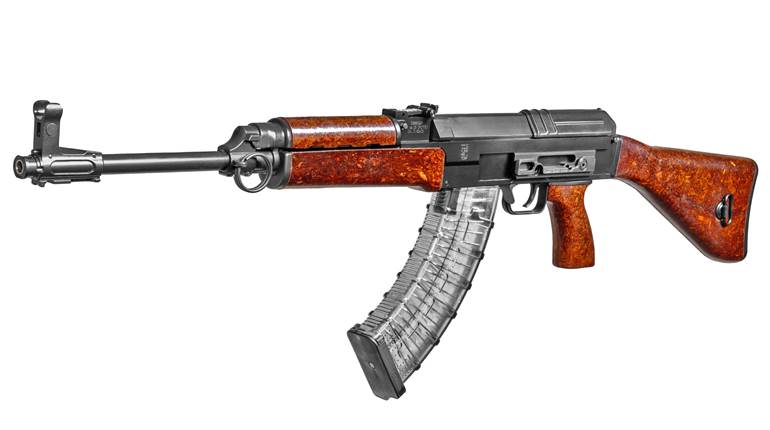
12/13/2012
It was the winter of 1994, and I was working my way through college behind the gun counter at a major sporting goods store. One of the reasons folks liked to stop by this location was the selection of quality gun safes available for inspection on the show room floor. It was on one of these cold afternoons that a customer came in to look at safes. He was ready to buy one because he had suffered a tragic, but all too common, break-in.
Fred, as we'll callhim,had recently inherited his father's gun collection, and lacking a good place to store the 30 or so shotguns, rifles and muzzleloaders that now belonged to him, he just tucked them here and there, in closets and under beds, like his father had. It was quite a shock for the man when he and his family returned from a short stint out of town to find their home had been pilfered and all of the guns were gone.
The police investigation eventually revealed the robbery was committed by a friend-of-a-friend who, knowing more about the value of antique arms than the owner, decided to help himself to the collection. Because the guns were antiques—many of which lacked serial numbers, along with the absence of photographic or written documentation to identify the individual guns in the collection—there wasn't much investigators could do to retrieve the missing antiques, except to return the five pieces still in the thief’s possession when he was caught. Out of curiosity, and for his home owner's insurance, Fred had the five surviving guns appraised. It turned out that those five guns, if auctioned off, would have paid off his mortgage and a fistful of car payments too. He couldn't begin to estimate what the entire set might have been worth. Thus he was looking for a safe to protect what he had left. This wasn't the first, or the last, break-in story I’ve heard. What surprised me the most was the number of safes we sold to gun owners after the fact. Needless to say, it would have made a world of difference if they had purchased a safe much sooner.
Stories like this one can make the perceived inconveniences of having a big, heavy and relatively expensive, gun safe installed in the home simply melt away. Safes represent one of the best ways for the average gun owner to protect firearms from theft, damage and unauthorized access. However, the wide selection of sizes, interior configurations and security features, can make shopping for a safe a challenge. But measuring the available features against your needs and doing some research can help you make a more informed choice, rather than just the less expensive one.To learn more about what modern safe shopping entails, I contacted Doug Tarter, Marketing Director for Fort Knox Safes of Orem, Utah.
Tarter made some interesting points. "Would you go buy the cheapest parachute you can find from a big-box store, and then go jump out of a plane?” he asked. "Safe manufacturers have no Consumer Reports to give the consumers any help."
There is no universal standard for materials or methods used in gun-safe construction, or any kind of U.S. regulatory system in place, therefore not all safes are created equal. Since most gun safes tend to be a lifetime investment, buying the right safe the first time is the best way to save money in the long run. Here are a few things to keep in mind while shopping:
Safe Size
The most common mistake first-time safe buyers make is to purchase a unit that's too small for their needs. Gun owners tend to look at the firearms they have on hand, check the number of guns a safe can hold, and then buy the smallest safe they can get away with. But when the safe arrives, family members point out that the fireproof safe would be a great place to store jewelry, documents, cameras, scrapbooks and so on. The shooter also quickly realizes that a scoped rifle takes up more space than a one-rifle slot allows for, and it would be nice to add a few more guns in the future. Soon the safe is stuffed and not everything will fit.
The rule of thumb Fort Knox recommends for sizing a safe is this: Measure everything you have or will have to put in the safe, including all of the non-gun items. Once you have this number worked out, identify a safe that will fit the collection. Then, buy a unit that's one size larger. This should prevent the need to buy a second safe any time soon.
Steel Thickness
The overall toughness of a safe is generally quantified by the thickness of the steel used in its construction. The numbers used to gauge steel can be a little confusing because they work in reverse. Just as a 12-gauge shotgun has a larger bore size than a 16- a 20-gauge, a 10-gauge sheet of steel is thicker than an 11- or 12-gauge sheet. Doug suggested that 10-gauge steel is the thinnest metal that should be used in a home safe. Buyers also need to pay attention to the thickness of the metal used in the safe’s door and frame.
Fire Protection
Unfortunately, statistics suggest that one out of six homes are likely to experience a fire. This makes the level of fire resistance a safe possesses one of the important price points buyers should consider. The greater the level of fire protection, the higher the cost of the safe will be. To determine fire ratings, safe manufacturers pay independent test laboratories to cook their products in a controlled setting.
But not all safes are fire tested in the same way, so here are some numbers to help rate the fire rating. The average American home will burn to the ground in about 60 minutes if the fire is left unchecked. Luckily, first responders often arrive within 10 to 15 minutes of a fire being reported, so typically a house is at least being cooled off—if not put out—within that first hour of the fire. The temperature of a burning house can reach as high as 1,100- to 1,300-degrees Fahrenheit. So, a fire rating is generated by measuring how hot the interior of the safe becomes when exposed to high temperatures over a period of time. In other words, if the contents of a safe can survive an hour or more at 1,300 degrees, you've got a solid fire rating.
Locking Mechanisms
As important as fire resistance is security, meaning how the safe is locked and unlocked. The level of theft resistance can also be adjusted depending on the security of the building it's used in. A safe located in the basement of a home with a security system may not need as many locking bolts and redundancies as one placed in a less secure out building like a detached garage.
Also, buyers have to choose between an electronic lock or a mechanical (spin dial) lock. Spin dials have provided 150-years of proven security effectiveness, with each lock offering a million potential combinations to befuddle burglars. These locks are simple and reliable, and less expensive than electronic locks. However, they are slow to open, especially under duress.
Electronic locks feature a number pad instead of a dial. This style of lock increases the possible combinations to 1.2 million and can be much quicker and easier to open. Some companies now offer finger print scanners to complement the number pad and increase access speed. The trade offs for electronic locks include an increased cost and a reliance on battery power. However, they do not decrease the security of the safe. Electronic locks are not any easier to defeat than a mechanical lock, and if they develop a problem they are designed to fail with the safe door frozen into a locked position.
Warranty
Last, but certainly not least, buyers need to review the fine print of the safe's warranty, if it has one at all. Some warranties only cover portions of the safe, while others may have time limits that apply. The best warranties provide lifetime coverage for key components or the whole safe, but this is usually only available with the more expensive safes. Depending on where you live, and the brand of safe you have, it can cost anywhere from $600 to $800 dollars to have a locksmith repair a broken or worn out lock on a safe. So the extra expense of a warranty that covers the lock may save you money in the long run.
When is it the right time to invest in a gun safe? There's no hard and fast rule that covers all circumstances, but here's one way to crunch the numbers. Add up the replacement cost (if they can be replaced) of the firearms, documents and other treasured items you would store in a safe. Then compare the cumulative value of your possessions to the cost of a basic safe of the right size for your needs. More likely than not, the items you own, especially if you collect firearms, will easily be worth two to three times more than the safe itself. If you're still not convinced, then divide the price of the safe by the number of years you expect to be using it. Compare this per-year dollar amount to the value of your loot, and you may find that owning a safe is one of the least expensive insurance policies available.






































